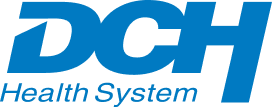
- Careers
- Employee Testimonials
- Christine H.
Christine Hinacay
Working in Health Care: Medical Technologist Has Chemistry with Lab Environment
Education & Experience
Hinacay, a native of the Philippines, completed her bachelor’s degree in medical technology at Cebu Doctors’ University and successfully completed the Philippine board exam to be a registered medical technologist.
- Degree courses included clinical chemistry, microbiology, serology, immunology, hematology, blood bank, histology, pathology and clinical microscopy, all of which fall within her lab duties
- Completed the American medical technologist exam to be able to work in the United States
- After graduation, Hinacay worked as a generalist in the Philippines and in Fort Stockton, Texas. She said that the medical technologist’s job is about the same between her native country and the United States, but there was a learning curve with everyday life
Years at DCH
7 years, all in the NMC Lab
Current Duties/Lab Overview
Seven people across 3 shifts, plus a split shifter, handle routine inpatient and outpatient requests. These include tasks like running blood samples for coagulation to test if a patient is a free bleeder; running a lipid panel in chemistry; urinalyses; and flu and strep tests. The blood bank portion of the lab performs cross-matching to ensure blood is compatible with the patient’s blood type and issues blood to nurses for transfusions. Specimens that require specialized testing go to Lab Corp, an outside vendor, or to the lab at DCH Regional Medical Center.
During her evening shift, Hinacay works as a generalist across all lab areas. In a typical shift, she might be:
- Calibrating and running daily quality control tests on the chemistry machine to make sure it is giving accurate results
- Running quality control on the hematology machine
- Drawing a patient’s labs if a phlebotomist is unavailable
- Cross-matching and issuing blood for transfusions
- Handling phone calls and doctors’ verbal orders to run particular tests on a patient
What I Like About My Job
“I work better in my own space where I can focus. I’m an introvert. I usually don’t have direct patient contact, but I still get to help patients and the hospital (through my work).”
What’s Challenging
“The pressure. It is kind of stressful when you are busy, and then you get a call from the OR about a patient who is going downhill. You have to work fast but keep your head at the same time.
“You do multitasking. You may be running a test in one room and another test in a different room.”
The Culture at DCH
“I can only talk about the lab at NMC, but when we came here to work and had our babies (she and her husband, who works as a patient care assistant at RMC, have three children), they helped us by making a change in the schedule. People have your back. I like what we have here. They have been really good to us,” Hinacay said.
Why She Chose This Field
Hinacay originally had plans to become a doctor. “I love science, experiments and discovering things. I did medical technology because it’s good training to become a doctor. But I realized while doing clinicals that I liked this work and that I didn’t want to go to school that long. So, I chose this profession with the thought of coming to the U.S.”
Career Pointers for Greenhorns
“The first thing is to love what you do, but you should choose a field that you have a strength in,” Hinacay said. “I love helping people, but I’m not very sociable. (My job) is a service for people, but in an indirect way. It’s a good job and there is demand for this field.”

